Growing shiitake mushrooms is the best way to make sure you have fresh, tasty shiitakes to eat. Mushrooms are a short lived perennial that is a great addition to your garden or homestead. Innoculate the logs in an afternoon and you’ll be harvesting shiitake mushrooms spring and fall for several years. Most mushroom logs will survive for 4-6 years, with full mushroom production beginning the spring after inoculation.
Gourmet shiitake mushrooms are prized for their meaty and versatile flavor and their many health benefits. Shiitake mushrooms have antiviral, antibacterial, anticancer, and antifungal benefits. They are considered a medicinal mushroom but they are so delicious its easy to add them to meals.
Shiitakes are the second most popular mushroom in the world and one of these easiest to cultivate at home. Shiitake mushrooms are grown on logs. At Joybilee Farm we’ve grown shiitake on logs in our back yard for several years.
Our first shiitake logs successfully fruited mushrooms for more than 4 years, after the initial preparation, with each log giving 2-5 pounds of mushrooms each season. The logs fruit in both spring and fall when the temperature and humidity is right for the specific variety of shiitake that you cultivate.
Shiitake mushrooms can be cultivated on sawdust, and on logs. Sawdust provides a shorter spawn run, and more rapid fruiting. However, it will only give two or three flushes of mushrooms before the nutrients of the sawdust are depleted and the mycelium is spent. Logs are a more solid investment, for shiitake mushrooms, and can fruit for more than 4 years before the wood completely decomposes. Even spent mushroom logs can be repurposed into hügelkultur beds, or other garden structures. Sometimes buried and spent logs will continue to fruit through the soil piled on them, depending on species.
Shiitake mushrooms are a strongly flavored mushroom, traditionally used in Asian cuisine and medicine. Shiitake can be cooked and eaten fresh, or dried and stored for later use in soups, broth, and other culinary and medicinal uses.
Growing Shiitake Mushrooms:
Shiitake mushrooms are grown from dowel plugs that have been inoculated with shiitake spawn. I got my shiitake dowel plugs from Grow Mushrooms Canada.
Chose shiitake plug spawn that will fruit in your average spring and fall temperatures. Some shiitake strains like it warmer than others. You can spawn two different types of shiitake, for different temperatures, just make sure that the dowel spawn is placed in separate logs. I used a “cold” strain of shiitake and a “wide temperature” strain.
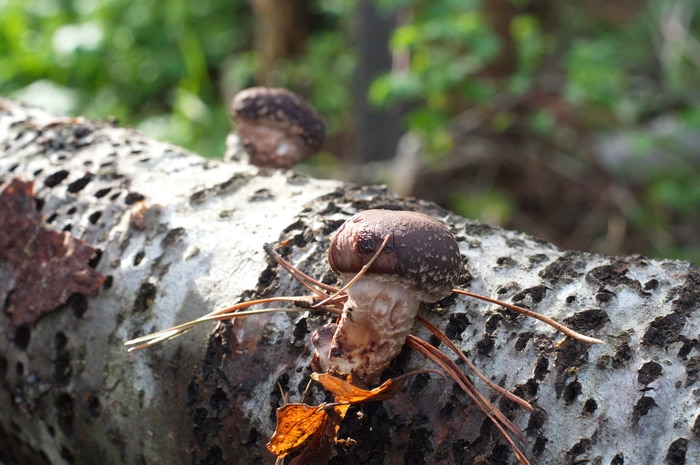
Logs for growing shiitake mushrooms
Shiitake mushrooms like alder, birch, oak, ash, beech, poplar, and maple. Logs should be cut down fresh, about two weeks before you plan to inoculate. The two week delay gives the logs time to lose their natural anti-fungal properties, but isn’t so long that airborne fungi can begin colonizing the log.
For the average mushroom plug spawn you’ll also need a 5/16th inch (8mm) drill bit, a drill and a hammer.
You’ll also need wax, and a wax melting pot and daubers to apply the wax to the plug holes when inoculating the log.
For growing 7 to 10 shiitake mushroom logs you’ll need:
- 500 spawned dowel plugs of your chosen shiitake strain
- 7 to 10 cut hardwood logs of the shiitake’s preferred type
- 1 5/16th inch (8mm) drill bit
- Masking or Duct tape
- 1 drill
- 1 hammer
- 8 ounces (250 grams) beeswax (melted)
- 4 wax daubers
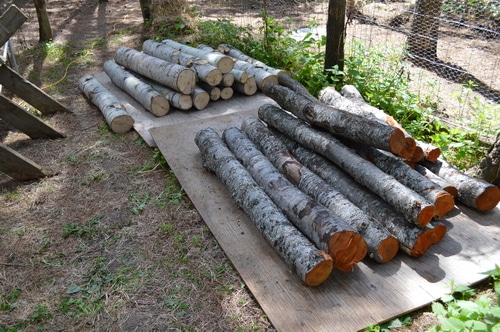
Step One: Getting your logs
Shiitake mushrooms grow on hardwood logs. Shiitakes prefer oak, alder, birch, poplar, and maple. If you need to remove, or thin, trees of one of these types then that will be the best source for your logs. Otherwise, you may need to talk to an arborist, or a local authority who deals with wild-harvesting trees for a permit to cut your own in the open forest. Trees must be living and free of fungal infections that might interfere with the shiitake spawn taking over the logs.
Choose logs without visible decay or rot. Signs of decay, in a tree or log, indicate that other fungi may already be present and you want as little competition as possible for your mushroom babies.
Trim branches and leaves off the logs, as applicable and cut into 4 foot lengths for ease of handling. A friend with a chain saw can help you prepare your logs.
Store the logs off the ground in a stack, in a shaded area. Support the stack with waste logs so that your shiitake logs do not touch the ground. You don’t want the logs to dry out, and you don’t want ground fungi to try to sneak in to compete with your shiitakes.
While waiting for your logs to age, make sure to order your shiitake mushroom spawn. If you order spawn too early, it can be stored in the refrigerator until needed. Try not to store mycelated plugs for too long, as the plug do start to break down and become more difficult to hammer into the logs.
Step Two: Drilling the holes
If you are working with multiple people, you can create a workflow and assembly line for inoculating the logs. Have one person marking the logs, one person drilling, and one person placing the plugs.
Starting about two inches up from the end of the log, drill or mark the first hole. At 4 inch intervals, up the length of the log, drill or mark additional holes. Rotate the log. Place the first hole of the next row exactly between two of the previous line’s marks, and about four inches from them. The goal is to make a diamond shaped pattern. Each row of holes will be off-set from the previous row.
Cover the entire log in holes at four inch intervals, with rows offset by four inches.
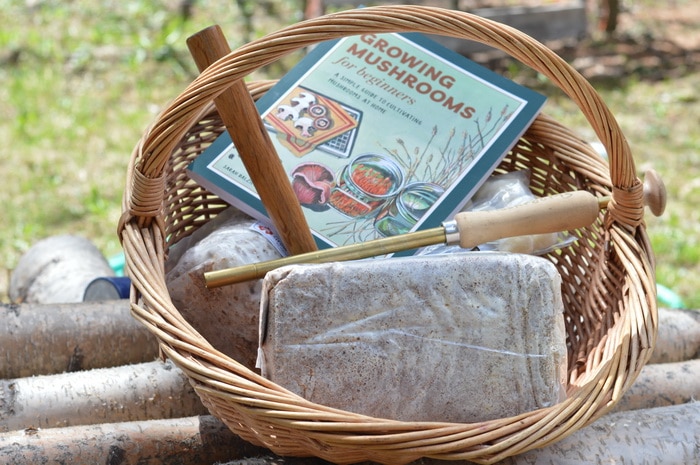
Tap in the shiitake plugs
Place one end of a dowel at the entrance to the drilled hole, and gently tap the dowel into the log with a hammer. Repeat down the row of logs.
When you come near the end of your dowels, work in circles around the log instead of in lines. This way, if you run out of dowels with a log only partially filled, you can just cut off the unused area of the log and have a fully seeded short log.
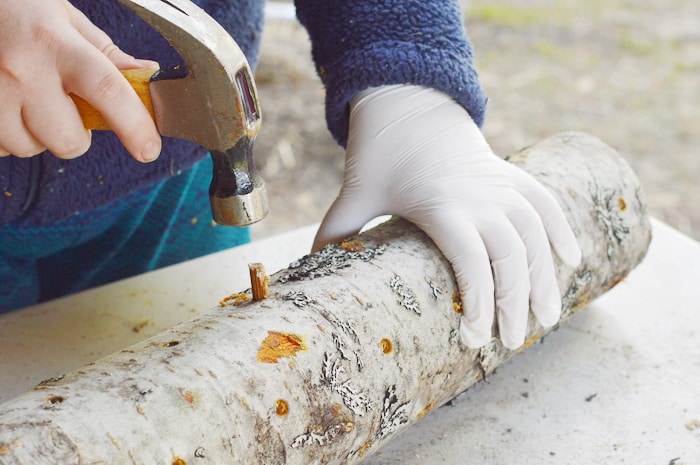
Spawning the Logs:
Set the logs aside to let the mushrooms grow. This will take between 6 and 12 months for most shiitake strains. Mushroom logs will not fruit until the log is fully mycelated. While waiting for the mycelium to run throughout the log, store the logs in a shaded area and water regularly.
Keep logs off the ground to prevent other fungi from competing with your shiitake fungi mycelium.
Between 6 and 12 months after seeding the logs, when conditions are right, you should see the first shiitakes beginning to pin. Let shiitake mushrooms grow from pins to 2-4 inch mushrooms before harvesting.
Harvesting Your Growing Shiitake Mushrooms
Cut mushrooms off the log with a sharp knife, trying to cut in line with the log itself. Shiitake stems are woody, so while you can simply twist off the mushrooms, the mushrooms bruise less if they are cut with a knife.
After harvest, brush any visible dirt off of the mushrooms, and store in a paper bag in the fridge for one to two weeks. Shiitake mushrooms can be cooked and then frozen, or dehydrated, for storage.
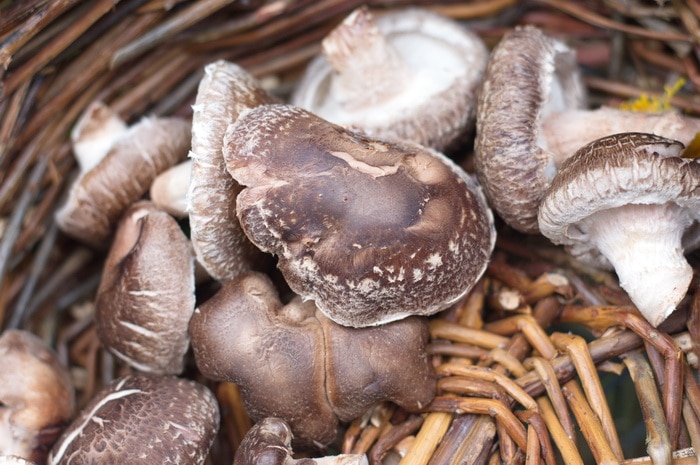
Learn more about growing mushrooms at home
Sarah’s new book, Growing Mushrooms for Beginners, A Simple Guide to Cultivating Mushrooms at Home, is available on Amazon and Barnes and Noble. In this concise resource Sarah guides you step by step through growing mushrooms on logs, on straw, on wood chips, or even in Mason Jars at home. The book includes instructions for growing seven mushrooms including shiitake, oyster, lions mane, garden giant and more. Learn the unique characteristics, flavors, health benefits, and specific growing requirements for each mushroom as well as space saving tips and recipes to get the most out of your mushroom harvest.
In this interview Sarah and Chris discuss ways to grow mushrooms in the garden, and highlight some expert tips from Sarah’s book, Growing Mushrooms for Beginners, A Simple Guide to Cultivating Mushrooms at Home.
Get your copy of Growing Mushrooms for Beginners now.


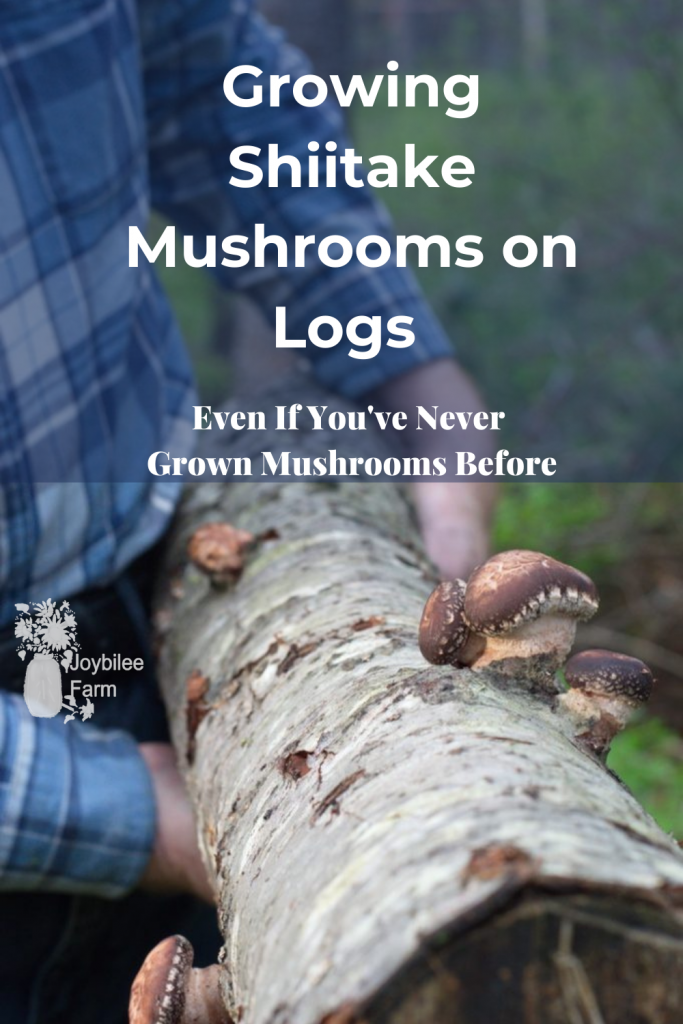
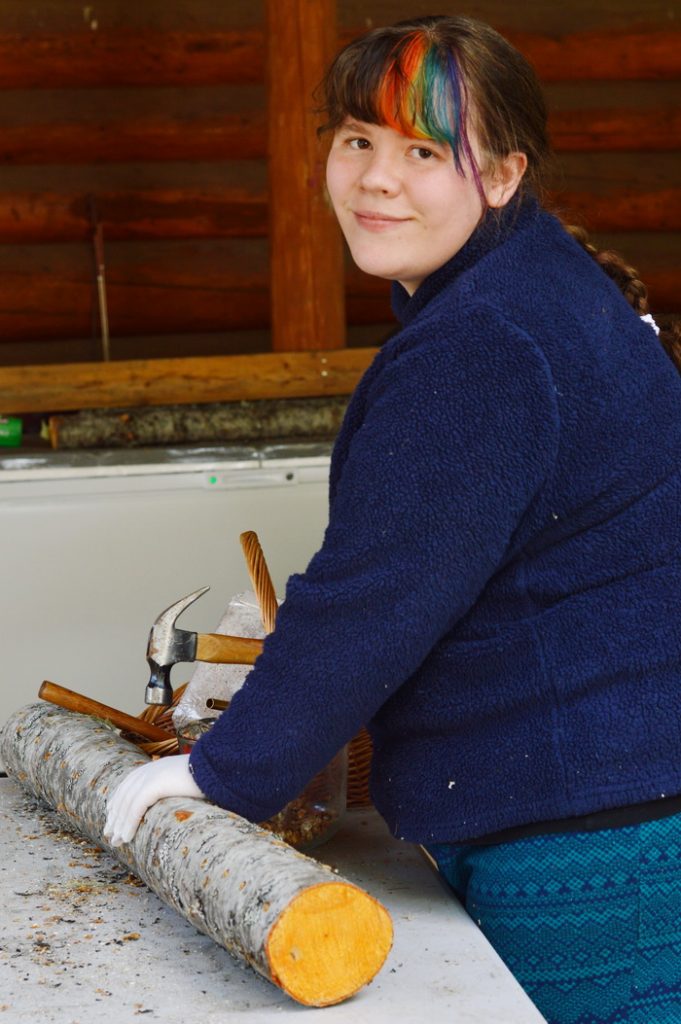



They last here in zone 3. I can’t say whether they would be good to go below -30F.
Can Shitake logs last a long very cold winter?